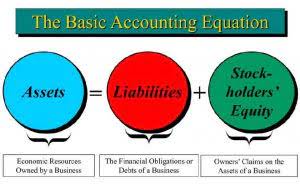
Accounting profit is the official financial metric used by businesses to determine profitability. It is calculated by subtracting explicit expenses such as salaries, rent, raw materials, and depreciation from total revenue. This measure is crucial for stakeholders, including investors, creditors, and business owners, as it provides an objective evaluation of financial performance. Unlike economic profit, accounting profit does not consider opportunity costs or implicit expenses. In modern enterprises, accounting profit is often reported in financial statements to comply with regulatory standards and taxation requirements. Understanding this metric helps businesses maintain transparency and credibility in financial reporting.
Expenses

It considers all expenses, including taxes, depreciation, amortization, and interest. The concept does not include opportunity cost, which would be included in the more comprehensive (and theoretical) economic profit concept. If your boot wholesaler generates $10 million in sales and has $5 million in operating expenses, your operating profit is $5 million. To find the gross profit margin, divide your gross profit by your sales revenue. For example, let’s say you have a boot store that generates $100,000 in annual revenue. Once you take out the cost of the leather, you have $80,000 (this is your gross profit).

Step 2: Calculate Explicit Costs
- Profit margin (sometimes referred to as profit margin ratio) is a financial metric that measures how much of a company’s revenue turns into profit after covering expenses.
- A financial analyst reviewing these results would interpret EBITDA and Net Income in different ways depending on whether they need to assess operational performance, profitability, or valuation.
- Conversely, tax benefits like depreciation allowances and investment credits can reduce taxable income.
- Certain business expenses, such as client entertainment or fines, may not be tax-deductible.
- Investing in software solutions for accounting, inventory management, and customer relationship management reduces administrative costs.
- If a company records sales but does not receive payments on time, it may experience liquidity constraints despite showing profitability on paper.
It doesn’t go on your books if you don’t have the money in your account—even if the work is done. how to calculate accounting profit While accrual accounting gives a clearer picture of financial health of a business, it does require more tracking. You’ll need to manage accounts receivable and stay on top of invoicing and collections. Businesses that sell on credit need to account for revenue at the time of sale, not when payment is received.
Step 2: Subtract operating expenses
- By comparing these two metrics, companies can gain deeper insights into their financial health and long-term sustainability.
- As an example, let’s say you work for a company that creates construction materials such as concrete.
- This profit figure is used in an organization’s financial statements, and is commonly used to evaluate its performance.
- Often referred to as the “top line,” revenue sits at the top of your company’s income statement and drives nearly every key financial metric below it.
- InvestingPro does the heavy lifting for you with pre-calculated profitability metrics and capital efficiency ratios across thousands of companies.
- After figuring out the profit for that particular product line, you may decide to discontinue the product.
Online courses can be a great way to build skills and knowledge in accounting and explore career opportunities, whether you want to start your own business or find your dream job with an employer. Revenue shows up at the top of an income statement and gives a snapshot of market demand and sales performance. While it can guide strategies in sales and marketing, it doesn’t always reflect the company’s profitability because it doesn’t account for expenses. This includes net sales of products, service fees, subscriptions, or any income tied directly to your core business operations. Revenue is Interior Design Bookkeeping the total amount of money a business earns from selling its products or services.
- For example, an accounting firm can have a profit margin of nearly 20%, while a tech consulting firm may have one of around 10%, with both businesses still being successful in their niche.
- Net Income, also called the bottom line, is a company’s true profit after subtracting all expenses, including operating costs, interest, taxes, depreciation, and amortization.
- These additional expenses are deducted to arrive at your net profit (aka net income).
- Online courses can be a great way to build skills and knowledge in accounting and explore career opportunities, whether you want to start your own business or find your dream job with an employer.
- By following a systematic approach, companies can ensure they report profit figures that reflect their actual financial position.
Business Applications of Economic Profit
Some businesses also include discretionary expenses, such as advertising and employee training, which can be adjusted based on financial conditions. Incorrect classification can lead to financial misinterpretations and impact decision-making. Ensuring expenses are categorised correctly enables businesses to maintain a clear understanding of their financial obligations. Where they differ is that economic profit also uses implicit costs; the various opportunity costs a company incurs when allocating resources elsewhere.
What is gross income in business?

By following this step-by-step guide, businesses can gain actionable insights into their financial health and strategic positioning, fostering informed decision-making and sustainable growth. The economic profit of a company reflects economic principles more than accounting principles. A leading retail chain increased its accounting profit by streamlining supply chain operations and renegotiating vendor contracts. By reducing procurement costs and improving inventory turnover, the company significantly boosted profit margins. Another example is a technology firm that adopted cloud-based contribution margin solutions to cut IT expenses, leading to higher profitability.

Streamline your accounting and save time
Conversely, if total recorded revenues are less than total recorded expenses, the remainder is an accounting loss. A fast-growing tech company might add back stock compensation expenses and other growth-oriented costs. But you should be suspicious of underlying profit numbers since accounting profit is reported for a reason.

Profit margin (sometimes referred to as profit margin ratio) is a financial metric that measures how much of a company’s revenue turns into profit after covering expenses. The profit per unit formula is the profit from a single unit of a product or service. You need to subtract the total cost of producing one unit from the selling price. For example, if you sell a product for $50 and it costs you $30 to produce, your profit per unit would be $20.
Comentários